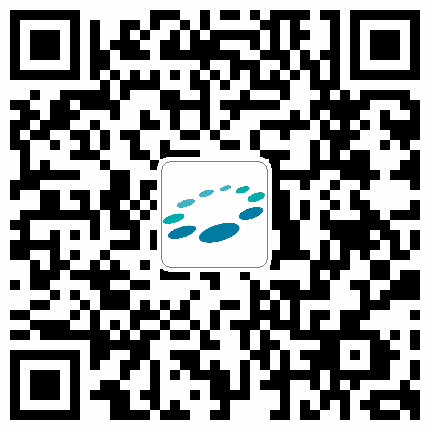Generation Z and the Sexting Epidemic
2022-05-14
Consensual teen sexting is on the rise. They have reached the age of sexual curiosity and they are spending more time on social media than any generation before. The unremitting lockdown during Covid-19 has seen an increase in this. Is it boredom or is it a bridge to attachment?
What is sexting?
It is the sharing and receiving of semi-nude or nude pictures, sexually explicit messages, messages propositioning sex, and forwarding other sexts that were meant to be private.
What is going on in the teen brain?
Teen brains are wired to seek rewards. The dopamine hit is created in the engagement of risky behavior. They are thrill-seeking, pleasure-seeking, and literally Go Go Go! Like a Ferrari without brakes. There is a lot of acceleration and little ability to apply brakes and think through consequences. Their prefrontal cortex is underdeveloped and the pros of an experience far outweigh the cons. With this comes a lack of impulse control.
Who and why do they engage in sexting?
Both boys and girls engage in this. There is no profile of a child who will engage in sexting. It could be the teen who is struggling with low self-esteem to the popular kid who has an abundance of self-esteem. It is happening on every social media platform i.e. Gaming Platforms, Kubool, Kik, Yik Yak, Ooch.me, Omegle, WeChat, WhatsApp, Snap Chat, and other platforms that have disappearing content.
It is not just risk that enables this. Underneath this, is something deeper. It is an exchange or a transaction of sorts. The currency just differs from case to case.
It can be for FUN between two people in a relationship where the exchange is to deepen the intimacy.
It could be the assumed GLUE that hopefully will bind my partner to me and hold the relationship together.
It can be MANIPULATION. If you love me, you will send a nude of yourself.
It could be for AFFIRMATION. This may be in the hope that the recipient may affirm their body.
It may be to IMPRESS a crush.
It could be for STATUS. In other words, look at the pic I received from the cool girl/ guy at school.
It can be SEXTORTION. I have this pic of you and if you don't want me to share is on social media, you need to send me X amount of money on an e-wallet or some other untraceable payment mechanism.
It could also be REVENGE pornography. This is to get back at an ex-girlfriend or ex-boyfriend.
So, what can I do as a parent?
First and foremost, keep channels of communication open between your child and yourself. The teen needs to know that you can be the go-to person in times of crisis. They need to know that you have their back.
Educate your teen about the dangers of sexting. Teens need to know that even on platforms where there is disappearing content, the recipient could take a screenshot and that content will never disappear. Discuss digital footprint and what that means.
Use opportunities for discussion and not disdain. Ask about peer pressure and talk about what they would do if they were asked to send a nude.
In the worst-case scenario where your teen has been caught up in the loop of sexting, avoid shaming them, and do not go straight to the consequences. Remain calm and unpack the exchange. For example, “I am here to help you and we need to figure out a solution. We can discuss the consequences later.”
Remember that there is no such thing as my child will never send a nude!
Educate your child about sexual grooming. These sexual groomers are lurking on social media platforms. The child may not realize that they are talking to a sexual groomer, and they slide into the person's private message place. Here the sexual groomer will engage teens, make them feel special, and possibly lead them to believe that they are in a relationship with this person. The groomers' intent is to get nude content from them.
What are the legal ramifications?
Child pornography is any visual depiction of sexually explicit content involving a child under the age of 18 years.
Asking for a nude is considered as solicitation of child pornography
Being in a nude is considered as child pornography
Having a nude on your phone is considered as possession of child pornography
Sharing the nude is considered as distribution of child pornography
The laws on this differ from country to country and state to state. In most western countries, the age of criminal capacity is usually from age 12 or 14 years and the child can be arrested. From approximately age 7 years the child is considered to have civil capacity and can be sued. In cases like this, the guardians of the minors may be subject to civil compensation. In China, the age of criminal capacity is 16 years old, and civil capacity from 8 years to 18 years. Capacity is dependent on the nature of the conduct and cognitive ability of the child.
What can teens do?
Delete any unlawful content received.
Deflect a request with humor. If someone says “Send me a hot pic” you can send an image of a pot of boiling water, or an image of a fire. If they say send a nude, send a pic of your forearm or a wall painted in shades of nude.
Keep an image on your phone saying “Cannot load photo” or “There is an error in loading this photo”
These strategies assist with impulse control. It gives the teen time to think and reflect on the consequences. The implication of these images is, that I am not falling for this!
If the person persists, speak to your go-to person and ask for assistance.
Never “like” content that you have been tagged in. You may be considered to be in the chain of publication.
Never forward illegal content, you could be considered to be in the chain of publication of unlawful content.
Article contributed by Dr. Vilia Lyell, Clinical Social Worker & Psychologist at Parkway.
For more information or to make an appointment, please contact us at 400-819-6622.





























